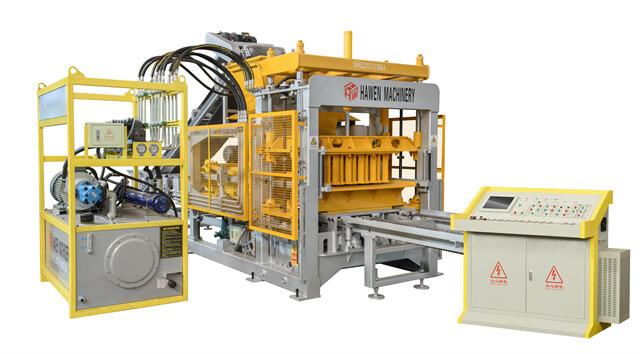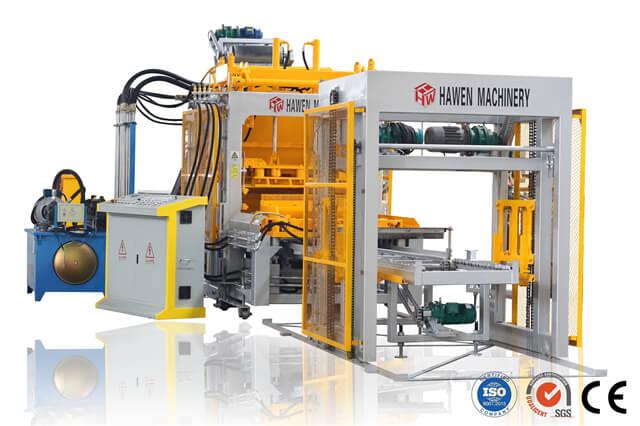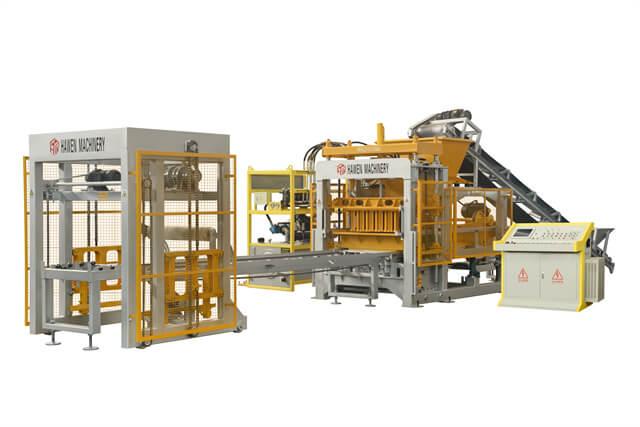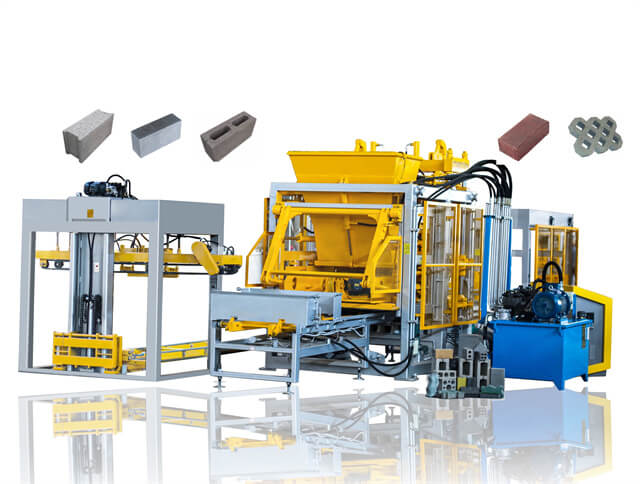Author:HAWEN Block MachineFROM:Brick Production Machine Manufacturer TIME:2024-04-15
The paver block machine is a versatile and efficient piece of equipment used in the construction industry for producing high-quality paving blocks. It is designed to automate the process of molding, curing, and stacking concrete blocks, thus improving productivity and reducing labor costs. In this article, we will explore the main structure and functions of a paver block machine.
The paver block machine consists of several main components, including the hopper, conveyor belt, mold, hydraulic system, control panel, and stacking system. The hopper is responsible for storing the raw materials, such as cement, sand, and aggregates. The conveyor belt transports these materials to the mold, where they are compacted and shaped into blocks. The hydraulic system provides the necessary pressure and force for molding and curing the blocks. The control panel allows operators to monitor and adjust the machine's settings, while the stacking system arranges the finished blocks for easy collection and transportation.
The feeding and mixing system is responsible for combining the raw materials in the correct proportions to form a homogeneous mixture. It usually consists of a batcher, mixer, and water dosing system. The batcher accurately measures the required quantities of each material, which are then transferred to the mixer. The mixer blends the materials thoroughly, ensuring a consistent and uniform mixture. The water dosing system controls the amount of water added to achieve the desired moisture content for proper curing and strength development.
The molding system of a paver block machine utilizes hydraulic pressure to shape the concrete mixture into blocks. It typically consists of a hydraulic cylinder, mold, and vibrators. The hydraulic cylinder applies pressure to the mold, compressing the concrete mixture and giving it the desired shape. The vibrators help in the compaction process, ensuring that the blocks are dense and free from voids. The mold can be customized to produce different sizes and patterns of paving blocks.
The curing system is crucial for the development of strength and durability in the concrete blocks. After molding, the blocks are transferred to a curing chamber or rack, where they are exposed to controlled conditions of temperature and humidity. This allows the blocks to gain sufficient strength and achieve the required level of durability for handling and installation. The curing time is typically around 24 to 48 hours, depending on the specific requirements of the blocks.
The stacking system automates the process of arranging and stacking the finished blocks for easy handling and transportation. It usually consists of a conveyor belt and robotic arms. The conveyor belt moves the blocks from the curing chamber to the stacking area, where robotic arms pick up the blocks and place them in neat stacks. This eliminates the need for manual labor and reduces the risk of damage to the blocks during stacking.
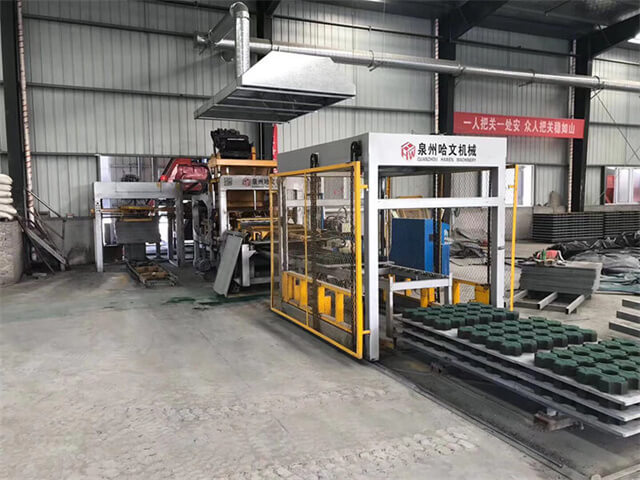
The control system of a paver block machine is responsible for monitoring and controlling the various functions and parameters of the machine. It typically includes a programmable logic controller (PLC) and a human-machine interface (HMI). The PLC receives input signals from sensors and actuators, and based on predefined algorithms, controls the operation of the machine. The HMI allows operators to interact with the machine, set parameters, and monitor performance in real-time.
Paver block machines are equipped with various safety features to ensure the well-being of operators and prevent accidents. These features may include emergency stops, safety interlocks, and protective guards. Emergency stops allow operators to quickly halt the machine in case of an emergency. Safety interlocks ensure that certain conditions are met before the machine can be operated, avoiding unintended actions. Protective guards protect operators from moving parts and hazards during operation.

The use of a paver block machine offers several benefits in the construction industry. It enhances productivity by automating the manufacturing process, reducing labor costs, and increasing output. The high-quality blocks produced by the machine have consistent dimensions and strength, resulting in durable and aesthetically pleasing pavements. Paver block machines find applications in various construction projects, including roads, walkways, driveways, and patio installations.

The paver block machine is a vital equipment in the construction industry, streamlining the production of paving blocks. Its main components and functions, such as feeding and mixing, molding, curing, stacking, and control, work together to ensure efficient and consistent block production. The use of a paver block machine brings numerous advantages in terms of productivity, quality, and versatility. As the demand for high-quality paving blocks continues to grow, the paver block machine plays a crucial role in meeting these needs.
